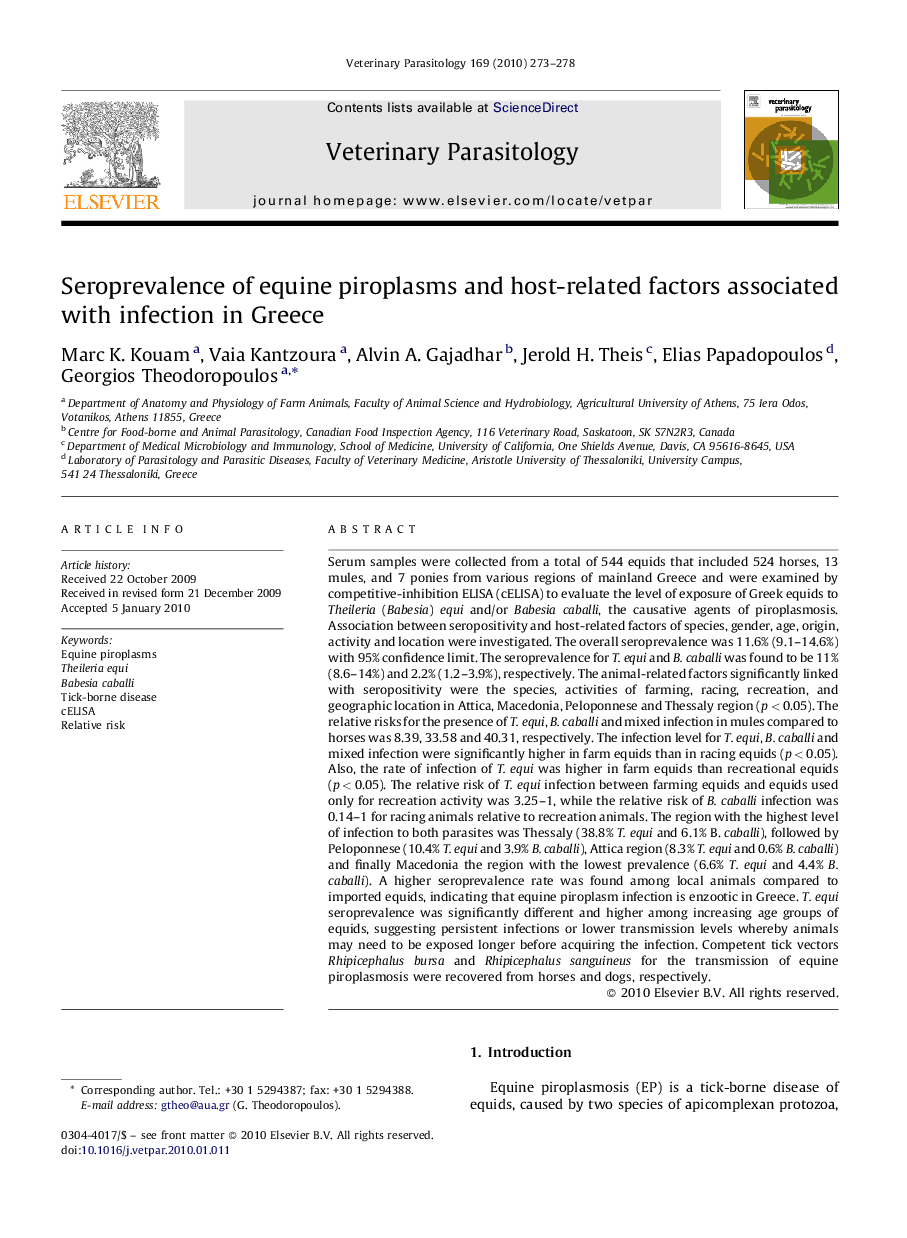| کد مقاله | کد نشریه | سال انتشار | مقاله انگلیسی | نسخه تمام متن |
|---|---|---|---|---|
| 2470865 | 1555742 | 2010 | 6 صفحه PDF | دانلود رایگان |

Serum samples were collected from a total of 544 equids that included 524 horses, 13 mules, and 7 ponies from various regions of mainland Greece and were examined by competitive-inhibition ELISA (cELISA) to evaluate the level of exposure of Greek equids to Theileria (Babesia) equi and/or Babesia caballi, the causative agents of piroplasmosis. Association between seropositivity and host-related factors of species, gender, age, origin, activity and location were investigated. The overall seroprevalence was 11.6% (9.1–14.6%) with 95% confidence limit. The seroprevalence for T. equi and B. caballi was found to be 11% (8.6–14%) and 2.2% (1.2–3.9%), respectively. The animal-related factors significantly linked with seropositivity were the species, activities of farming, racing, recreation, and geographic location in Attica, Macedonia, Peloponnese and Thessaly region (p < 0.05). The relative risks for the presence of T. equi, B. caballi and mixed infection in mules compared to horses was 8.39, 33.58 and 40.31, respectively. The infection level for T. equi, B. caballi and mixed infection were significantly higher in farm equids than in racing equids (p < 0.05). Also, the rate of infection of T. equi was higher in farm equids than recreational equids (p < 0.05). The relative risk of T. equi infection between farming equids and equids used only for recreation activity was 3.25–1, while the relative risk of B. caballi infection was 0.14–1 for racing animals relative to recreation animals. The region with the highest level of infection to both parasites was Thessaly (38.8% T. equi and 6.1% B. caballi), followed by Peloponnese (10.4% T. equi and 3.9% B. caballi), Attica region (8.3% T. equi and 0.6% B. caballi) and finally Macedonia the region with the lowest prevalence (6.6% T. equi and 4.4% B. caballi). A higher seroprevalence rate was found among local animals compared to imported equids, indicating that equine piroplasm infection is enzootic in Greece. T. equi seroprevalence was significantly different and higher among increasing age groups of equids, suggesting persistent infections or lower transmission levels whereby animals may need to be exposed longer before acquiring the infection. Competent tick vectors Rhipicephalus bursa and Rhipicephalus sanguineus for the transmission of equine piroplasmosis were recovered from horses and dogs, respectively.
Journal: Veterinary Parasitology - Volume 169, Issues 3–4, 11 May 2010, Pages 273–278